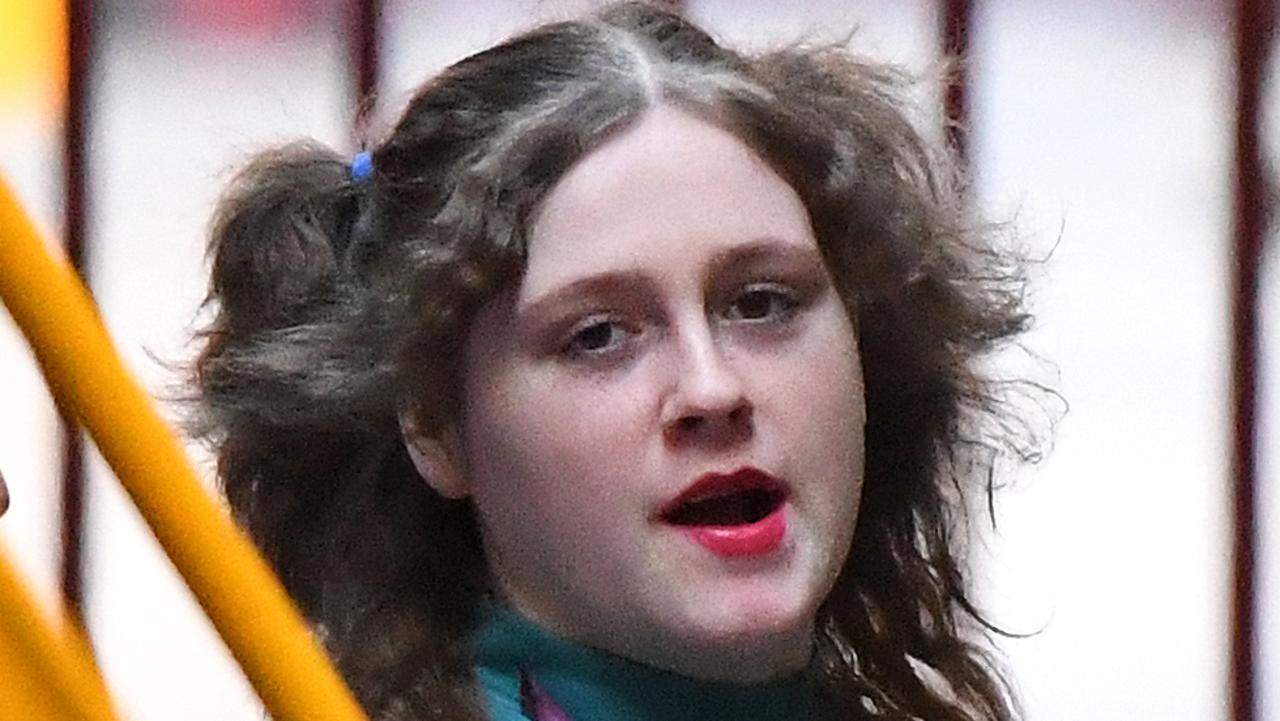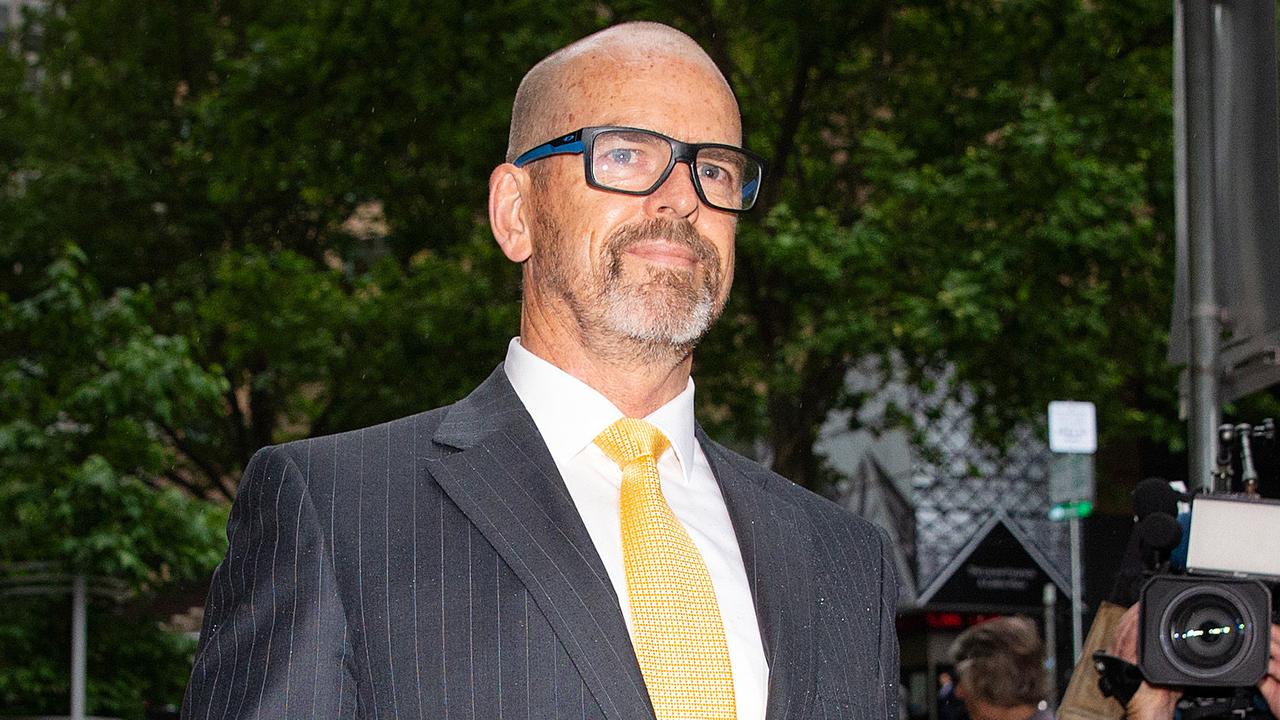Melbourne’s gangland: Mafia link to world’s biggest ecstasy bust
GANGLAND lawyer Joe Acquaro’s mob connections went to the top, including the powerful Francesco Madafferi — a player in an audacious $440m ecstasy shipment in tomato tins.
True Crime Scene
Don't miss out on the headlines from True Crime Scene. Followed categories will be added to My News.
- Andrew Rule: Rumours rage over mob lawyer’s death
- Slain gangland lawyer had no fear
- Grisly end for the ‘chosen one’
- Lawyer beaten over snitch suspicion
SLAIN gangland lawyer Joe Acquaro’s mob connections went to the top, including the powerful Francesco Madafferi — a key player behind an audacious $440m ecstasy shipment.
Authorities were stunned to uncover the 2007 plot to import 15 million pills — weighing 4.4 tonnes hidden inside tomato tins shipped by the Calabrian mafia from Italy to the Melbourne docks.
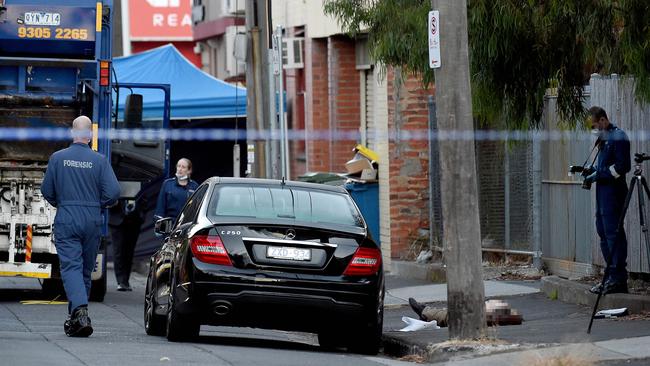
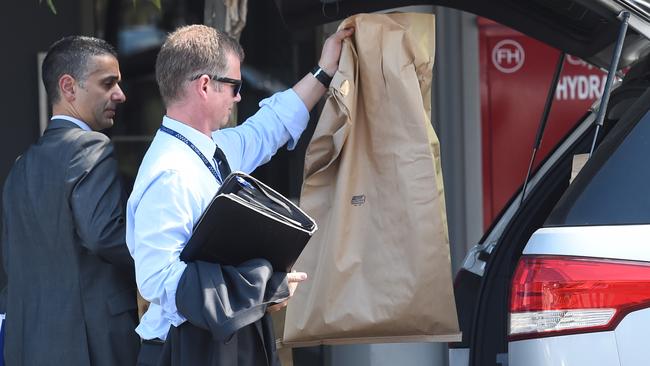
Acquaro earlier represented Madafferi in a marathon — and successful — bid to avoid being deported over his criminal record.
But just months after former the Federal Minister Amanda Vanstone overturned an earlier decision to deport him, the Melbourne-based Calabrian Mafioso had taken on a role as a drug dealer on a massive scale.
The previous immigration minster Philip Ruddock had rejected his appeals to stay and was set to deport him.
Acquaro fought the case to the UN, and finally won victory with Vanstone approving his stay on “compassionate grounds”.
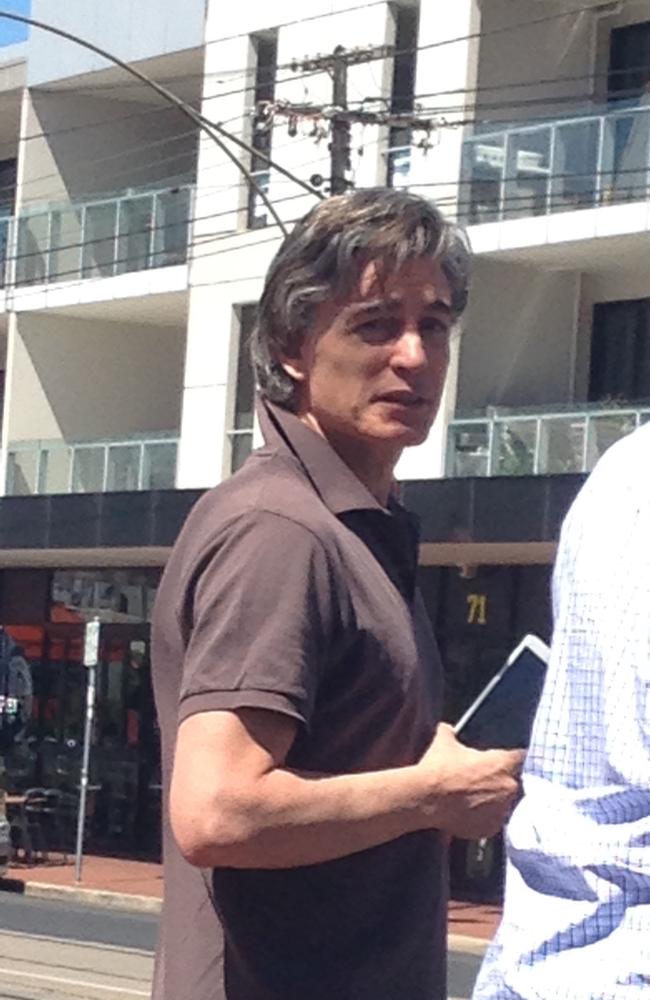
From freedom to giant drug deals
Almost immediately that Madafferi had won the reprieve, he switched to a role selling a monster 4.4 tonne shipment of pills from Italy.
Ms Vanstone, the then Immigration Minister, had granted Madafferi a permanent spouse visa in 2005.
That reversed a 2000 decision by Ruddock, to refuse him a visa on the ground he was of bad character.
Mr Ruddock said it would be against the national interest to allow Madafferi to stay in Australia.
He made that decision after Victoria Police claimed if Madafferi was allowed to stay he would “continue to carry out acts of violence on behalf of an organised crime syndicate”.
Victoria Police claimed then that Madafferi was “involved with blackmail, extortion and murder”.
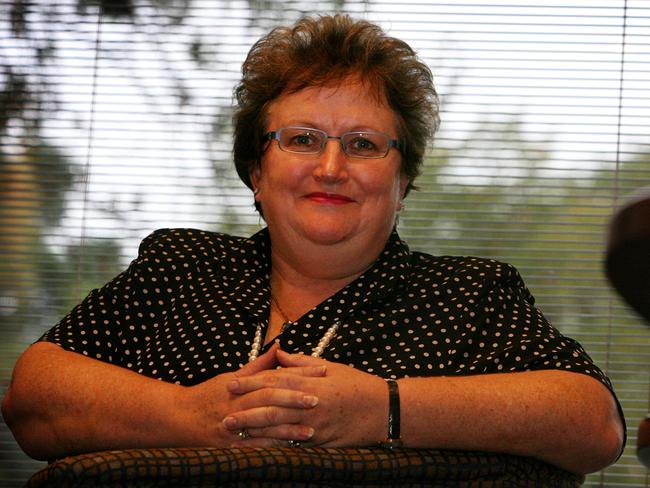
Just three years after Ms Vanstone rescued Madafferi from deportation he was taped by police telling fellow Calabrian mafia drug dealer Pasquale Barbaro — and the brains behind the giant ecstasy shipment — that he intended kidnapping criminal associate Pino Varallo so he could “tear his head off and chop him into little pieces”.
A scared Varallo rang Barbaro on July 26, 2008, and as the AFP listened he said he had recently spoken to Madafferi and that Madafferi was “going off his rocker” and was “off his tree” and had threatened slit Varallo’s throat or shoot him.
Madafferi also bragged in another taped conversation that while Barbaro controlled drug operations interstate “Melbourne is mine”.
He angrily warned Varallo to not “break my f…..g balls on my f … … turf” and that he, not Barbaro, was “responsible for Melbourne”.
Madafferi was charged in 2009 with conspiracy to murder in relation to yet another falling out, but the charges didn’t proceed past the Magistrates’ Court committal stage.
He failed to reveal convictions in Italy for stabbings, extortion and drug offences when he came to Australia in 1989 on a six-month visitor’s visa and stayed illegally.
He married Australian citizen Anna La Verde the following year and the couple had four children.
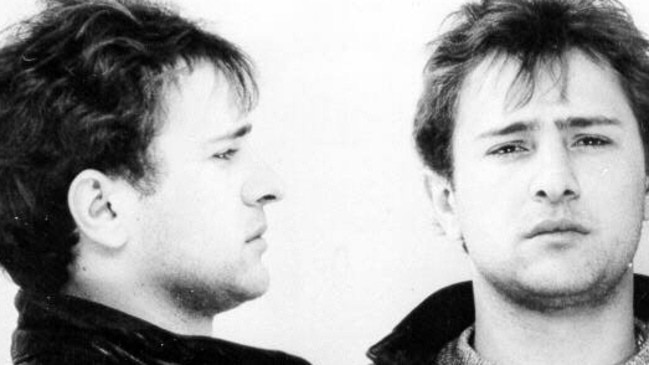
Madafferi was caught and detained as an illegal immigrant in 1996 after a raid by Immigration Department officers and detectives from Victoria Police’s organised crime squad.
There was an outstanding warrant for his arrest in Italy at the time, where he faced almost five years’ jail on unserved sentences for violence and dishonesty offences.
Madafferi had also served jail time in Italy for kidnapping, mafia conspiracy, theft and other offences against the person — he was released from prison in 1987.
Documents seen by the Herald Sun reveal Mr Ruddock’s 2000 decision not to grant Madafferi a visa was based on his view that allowing Madafferi to stay in Australia would have a detrimental effect on Australia’s reputation and good name in the international community.
“On balance, I found that due to the seriousness of Mr Madafferi’s convictions and his outstanding warrant of arrest and sentence in Italy, it would be in the national interest to refuse his visa,” Mr Ruddock’s said in a 2000 document sent to Madafferi’s lawyers.
Mr Ruddock’s 2000 decision not to grant Madafferi a visa was upheld in 2002 by the full bench of the Federal Court.
Former Senator Vanstone confirmed to the Herald Sun in 2006 that Madafferi had later been given a permanent spouse visa.
“Given all the circumstances surrounding the case I believe it was appropriate to grant the visa,” she said then.
Madafferi was dealing drugs just months later.
He was heavily involved with various members of the Barbaro drug gang, and was selling ecstasy provided by Barbaro gang members.
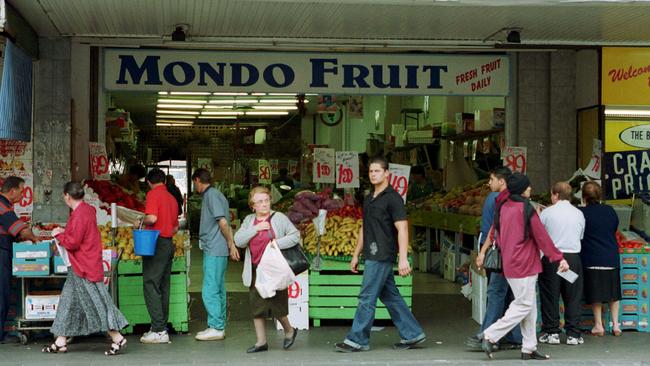
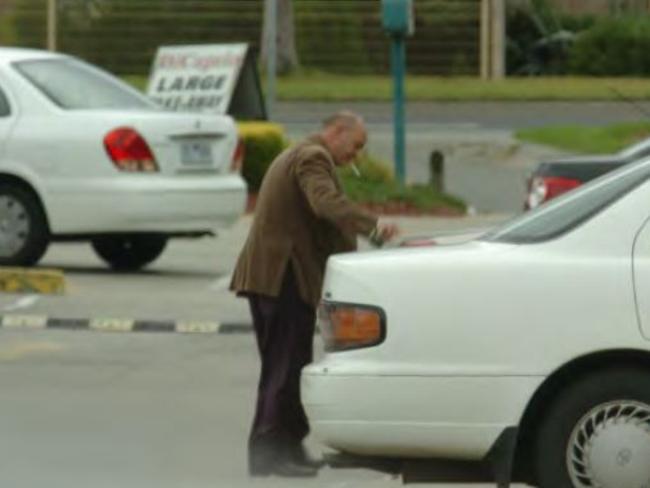
AFP agents secretly taped Barbaro and Madafferi discussing drug deals.
Surveillance officers also secretly watched Barbaro and Madafferi when they flew to Perth together on May 19, 2008, to organise interstate drug deals, with Madafferi introducing Barbaro to Perth-based Calabrian mafia drug dealers.
Madafferi and Barbaro were both arrested on August 8, 2008, by AFP agents.
Documents seized from an apartment in Little Palmerston St, Carlton, which Barbaro used when visiting Melbourne from his home in Griffith, revealed precise details of the ecstasy supplied to Madafferi by the Barbaro syndicate.
Barbaro’s business records showed Madafferi received 57,000 ecstasy tablets between February and May 2008, and that he also helped Barbaro traffic a further 35,000 pills to a Perth drug gang.
Until his 2008 arrest, Frank Madafferi ran Mondo Fruit in Sydney Rd, Coburg.
They called him “Fruit” (because of his business), “Chiccio”, “Pacho” (a diminutive from the Calabrese “pacciu”, meaning crazy or mad) and just “Madman” (because he was).
For his part in trafficking in a commercial quantity of ecstasy he was jailed for 10 years and ordered to serve a minimum of seven.
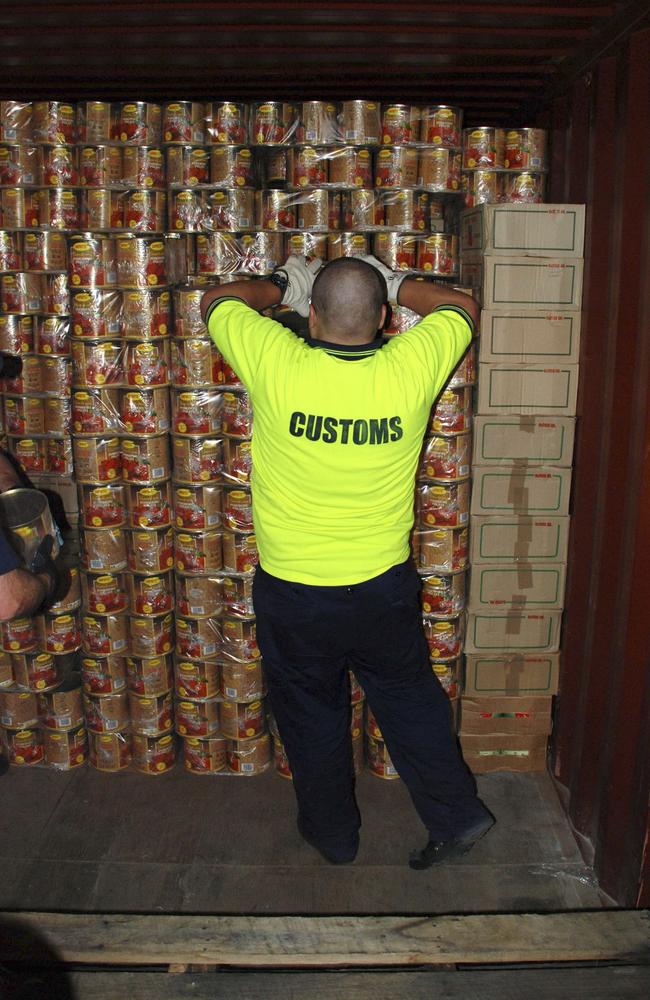
Behind the world’s biggest ecstasy bust in Melbourne
IT’S difficult to imagine that of all the hugely populated cities around the globe, it is little old Melbourne which holds the title of the site of the world’s biggest ecstasy bust.
Yet it has held that distinction twice, with the first world’s biggest ecstasy bust of 1.2 tonnes being made here in 2005.
That record was eclipsed when Australian Federal Police agents seized 4.4 tonnes of ecstasy pills in Melbourne in 2007.
There are two main reasons such massive amounts of ecstasy were shipped to Melbourne. The first is Australia has very strong Calabrian mafia cells in Melbourne and elsewhere and the Italian organised crime gang is one of the world’s biggest traffickers of ecstasy.
Secondly, Australians are wealthy enough to pay the world’s highest prices for ecstasy tablets — making it an attractive place to smuggle to.
This is the inside story of that ecstasy bust, which involved 15 million pills hidden inside tomato tins shipped by the Calabrian mafia from Italy to the Melbourne docks, and how those responsible were brought to justice.
Then AFP Commissioner Mick Keelty said he was stunned when he got the phone call telling him his Melbourne agents had just made the world’s biggest ecstasy bust.
Among the connections made by agents during a mammoth investigation:
SENIOR gang members were secretly taped plotting to murder the man they blamed for the 4.4 tonne shipment of ecstasy being seized.

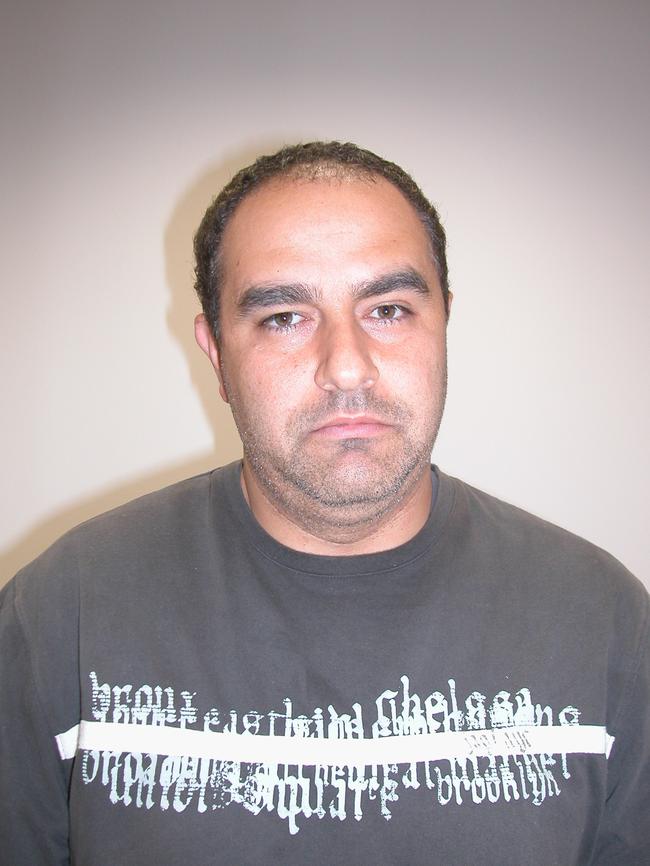
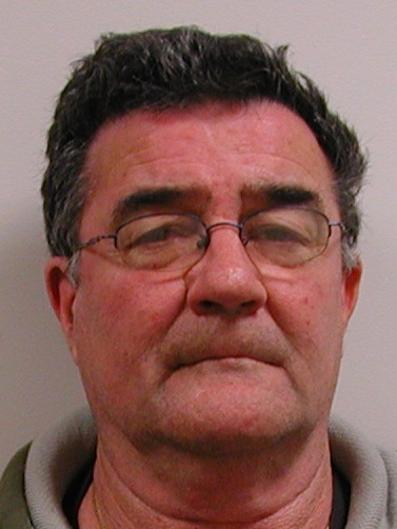
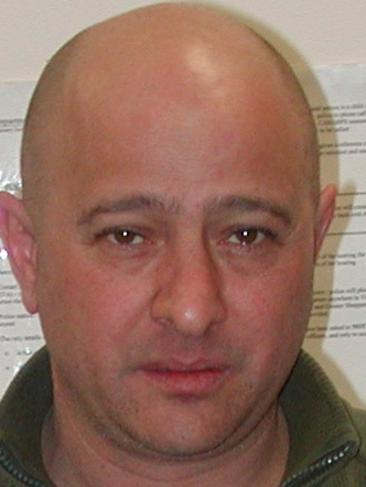
PASQUALE Barbaro, the Griffith-based boss of the Calabrian mafia gang behind the 4.4 tonne ecstasy importation, is the son of Francesco “Little Trees” Barbaro, one of the men named in the Woodward royal commission report as being an influential member of the Griffith mafia cell which murdered anti-drug campaigner Donald Mackay in 1977.
BLACK Uhlans bikie gang founder John Higgs was secretly recorded saying he wanted to wrap a contact in carpet and “throw him in the river” as punishment for the ecstasy shipment being grabbed by police.
A JOINT police and spy agency taskforce set up by the Australian Crime Commission helped police in Europe arrest 27 members of the Belgian syndicate believed to have made and sold the 4.4 tonnes of ecstasy to the Italy-based Calabrian mafia cell which shipped the pills from Naples to Barbaro’s gang in Melbourne.
MORE than 30 gang members were convicted and jailed by Victorian courts for a total of almost 300 years following the monster bust.
ROB KARAM — who was convicted drug boss Tony Mokbel’s shipping industry inside man — was on bail and on trial over the previous world record seizure in Melbourne of 1.2 tonnes of ecstasy in 2005 at the time he was helping organise the 4.4 tonne importation in 2007.
Intelligence the key to giant bust
While neither the AFP nor Customs were aware of a specific container of drugs, they had intelligence provided by a number of overseas agencies that a shipment of drugs was thought to have left Europe for Melbourne.
That led to Customs singling out a large number of containers to be searched.
They struck gold when they opened up container MEDU1250218 and cut the top off one of the sealed tomato tins to find it full of ecstasy tablets stamped with various logos, including a kangaroo.
The AFP was alerted and the mammoth job of opening up 607 boxes containing 3642 tins, removing the contents and repacking them with fake drugs began — with the intention of then watching the container and allowing it to be picked up and delivered so they could nab whoever did so.
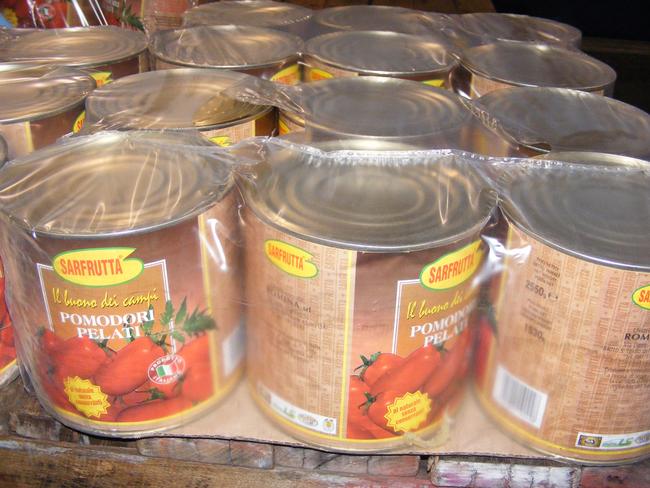
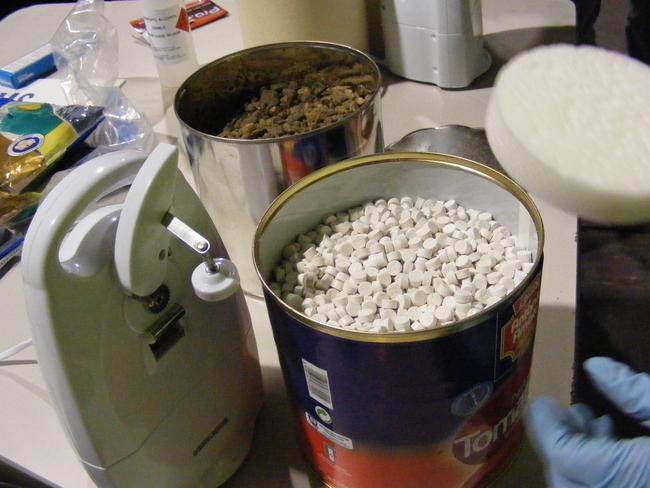
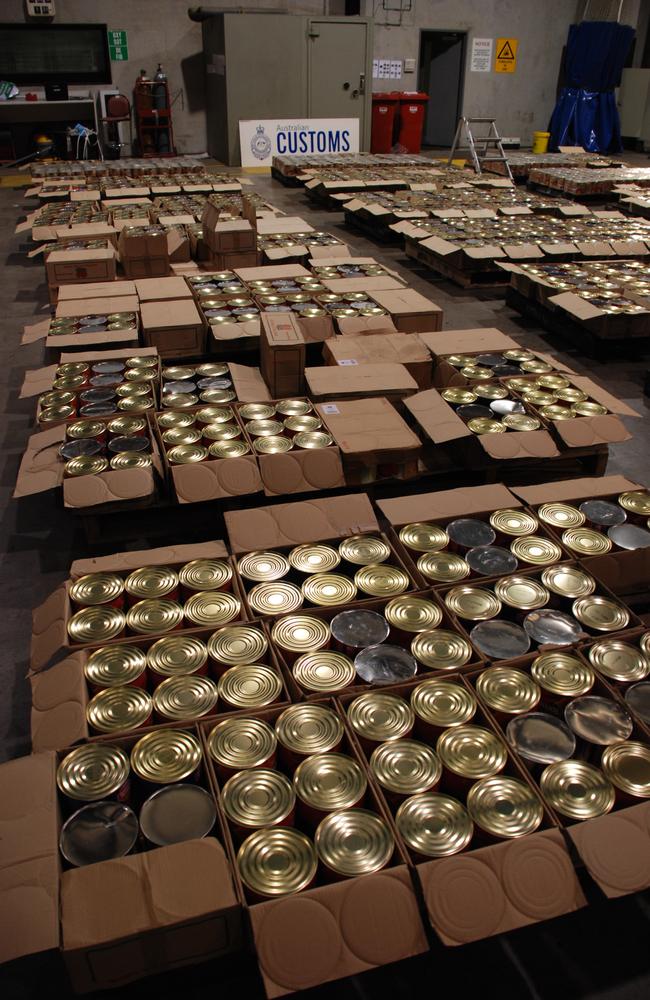
The pills had been professionally packed, probably at a cannery in Italy. Some of the tins actually contained tomatoes, others were packed with gravel and 3034 of them were full of ecstasy pills. The tins of gravel were included so the total weight of the consignment would match what a genuine shipment of 3642 tins of tomatoes would weigh.
The total number of ecstasy tablets packed into the tomato tins was 15,193,798 and they weighed 4.423 tonnes.
Calabria, in the toe of southern Italy, is the world headquarters of the Italian organised crime gang ‘Ndrangheta.
It is simply called the mafia by most in Australia, or the Calabrian mafia to differentiate it from the Sicilian mafia.
The Herald Sun became aware through Italian police contacts in early 2007 that the Calabrian mafia was involved in shipping huge amounts of ecstasy to Melbourne.
It agreed to an AFP request not to reveal the Calabrian mafia connection to either the first 1.2 tonne shipment or the second 4.4 tonne one.
The AFP feared publicising the Calabrian connection would tip off the Italians that they were under investigation as the prime suspects.
In what was one of the largest AFP operation ever, gang members were watched by surveillance officers for 10,000 hours, 185,215 telephone conversations between gang members were secretly recorded and AFP agents and prosecutors put in 287,000 hours of work to crush the syndicate.
How a Google search brought the whole game unstuck
The 2007 world’s biggest ecstasy bust wouldn’t have been anywhere near as successful if a freight-forwarding manager in Melbourne had done what the crooks expected would happen after the container was unloaded.
It’s likely those arrested over the 4.4 tonne shipment would have been the lowly labourers sent by the Barbaro gang to pick up and unpack the pills.
But luck was with AFP that day in 2007.
It was that manager’s job to ring a Melbourne company, which her paperwork said had imported a container load of tomato tins from Italy, to let them know it was ready for collection.
While the company was legitimate — and had no idea its name was being used by criminals to import 15 million ecstasy tablets — the phone number on the fake documents was linked to the drug syndicate.
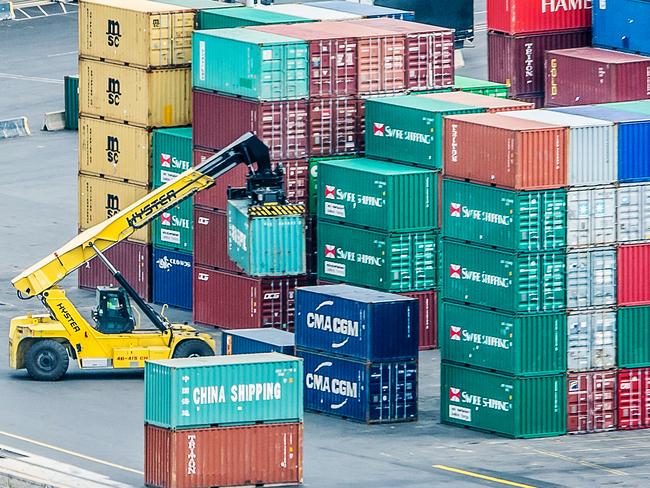

Had the manager rung that number a gang member would have answered, pretended to be from the legitimate company and arranged for the container to be picked up without the company ever knowing its name had been used.
But instead of reading the paperwork to get the number, she Googled its name and rang the number on her screen not from the fake paperwork.
That meant she got through to the real company rather than the crooks.
Alarm bells started to ring when the company denied it had imported any tomatoes.
As the AFP was watching the container, it had no choice but to move once it started being emptied by unsuspecting staff from the legitimate freight forwarding company.
As it turned the freight forwarding company manager did the AFP a favour by accidentally ringing the legitimate company.
Doing so meant the AFP ended up being able to arrest far more senior members of the gang than it would have had she rung the crooks.
Cops twig to a ‘drug shipment gone wrong’
Conversations secretly taped by police revealed the Barbaro gang remained hopeful of obtaining the 15 million pills for months after the container arrived in Melbourne on June 28, 2007, while suspecting, but not being sure, that the ecstasy had been seized.
Most of the evidence which led to the 33 people being charged was obtained in the months after the 15 million ecstasy pills were seized, with arrests not being made over the 4.4 tonne shipment until 13 months after the container arrived in Melbourne.
That evidence included the AFP capturing text messages in which Calabrian mafia boss Pasquale Barbaro attempted to persuade a Melbourne newspaper journalist to start asking the AFP questions about the ecstasy container to try to find out if it had been seized.
It was vital evidence linking Barbaro to the container in which the 15 million ecstasy tablets had been hidden.
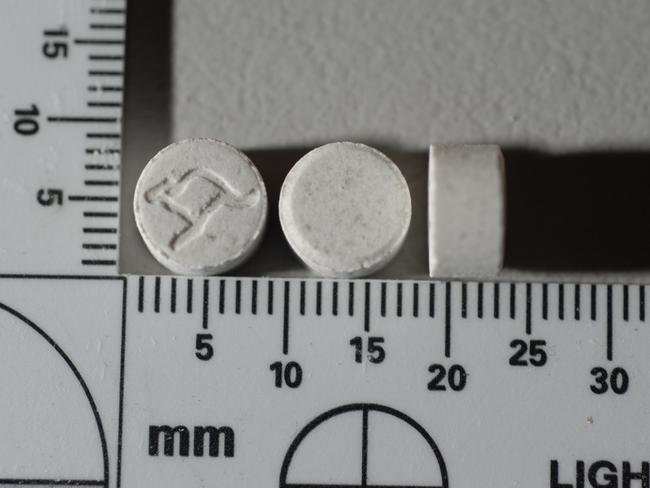
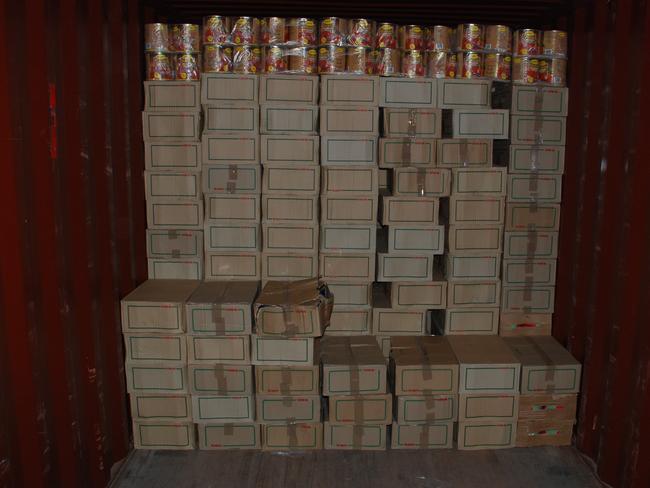
Several weeks after the 4.4 tonne ecstasy shipment was seized, Barbaro sent a text to the Melbourne journalist.
It said: “Mate, I have info on a drug shipment gone wrong, will u chase it up as I’m afraid to tell police of fear they might be involved. The container number is medu 1250218 and it came in on the ship monica 2 months ago and it is 15 million ecstasy tabs in tomato tins. Why isn’t it out, it’s the biggest in history.”
After Barbaro lost the 4.4 tonne shipment in 2007 he and other senior gang members, in their desperation to earn the $10 million they needed to quickly pay their debt to the European organised crime syndicate, became much more hands on.
They talked more on telephones, had more face to face meetings and physically handled drugs — providing crucial evidence for the AFP as they did so.
Barbaro was caught on tape telling a fellow gang member he was doing things that he hadn’t done since he was learning the criminal ropes as a teenager.
Telling the mafia big boys the bad news
It wasn’t until July, 2007, that Barbaro told his Calabrian mafia bosses in Italy the bad news that it appeared the ecstasy had been seized.
He flew to Calabria on July 21, after being secretly recorded saying he needed “to lick their wounds” and that he had been copping “the heat, right left and centre”.
In a later call, Barbaro said the suppliers of the ecstasy in Italy were all “starving here, and I’m to blame”.
Barbaro came back to Australia after a month with the news that if the 4.4 tonnes of ecstasy was lost then he and his fellow drug importation financier each had to send $5 million to the European syndicate to compensate for the loss.
A flurry of drug activity by Barbaro and his gang in the following months to get money to pay that debt provided yet more evidence for the AFP, with two breakthroughs in particular providing a mountain of vital information.
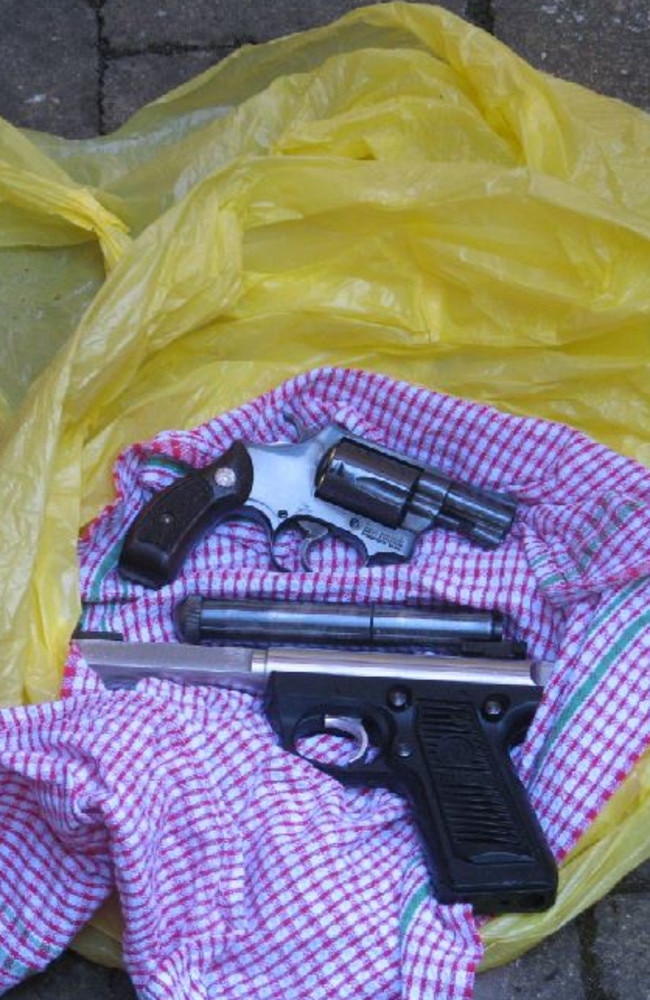
AFP Detective Superintend Matt Warren said a number of factors, some beyond the AFP’s control, contributed to making the investigation so successful.
“It was a perfect storm of events coming together,” he said.
“There was the sheer size of the seizure, the quirk of fate that led to the controlled delivery not being successful and the crooks failing to get their hands on the drugs.
“All that meant we could commit to giving the operation whatever it needed.
“The majority of the brief of evidence against them came after the seizure of the container.
“It was their attempts to locate it, find out what had happened to it and then further drug activity to get the money to pay the debt they owed for it that gave us the evidence to charge so many of them.
“Barbaro in particular became a lot more hands on than he normally would be. Crooks of his stature usually stay well removed from the actual drug dealing so as to avoid detection.
“They have people to do the dirty work for them.
“He did so through desperation because he needed money quickly to pay back the $10 million to the syndicate in Europe and in that desperation made mistakes and provided us with the evidence to help convict him.
“There was a bill to be paid and the consequences of not paying it would be serious.
“I suspect what was really owed was a lot more than that and there was some negotiation, based on Barbaro’s high standing with the international Calabrian mafia community, for him to get a discount on what was really owed.
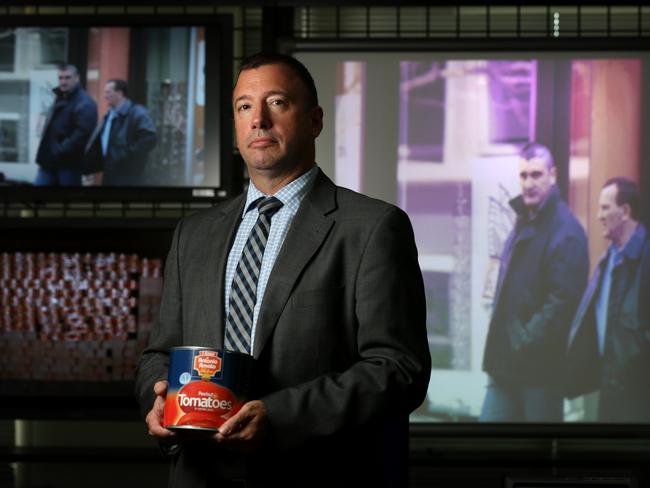
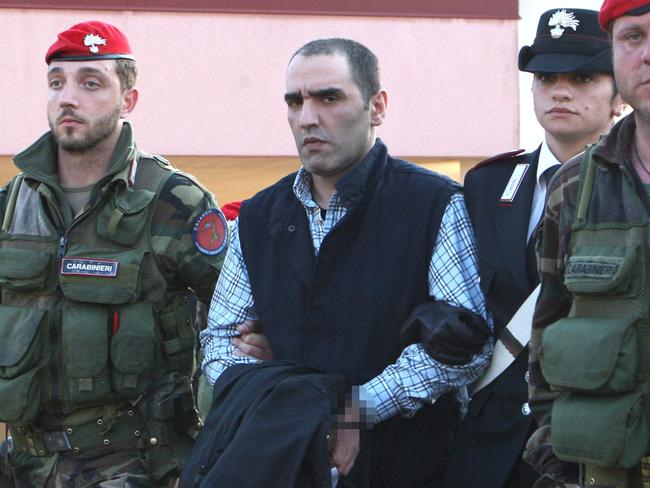
He said it was likely those in Italy were higher up the Calabrian mafia hierarchy.
“There has been enough intelligence gathered over the years by the AFP, the ACC and the NCA before it, as well as various other organisations who have looked at the ‘Ndrangheta as a group, to say the leadership goes right back to Calabria.
“It branches out into various parts of Europe. They have strong links in Germany.
“The centre of Calabrian mafia operations is in Europe, with Australia as a franchise.
MORE TRUE CRIME REPORTS
MAFIA CONNECTIONS: Last lawyer hit ‘the end’ of gangland war
DOUBLE MURDER: Footy clinic the scene of our most shocking underworld hit

